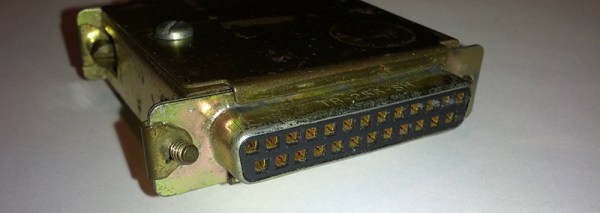Back in the old days of 2014 when Radio Shack still existed, you could drive up to any strip mall in America and buy D-sub connectors that were made all the way back in 1972. Yes, connectors for all those SCSI, serial, parallel, and other weird ports you’d find on old computers could be bought for less than five dollars. For some reason or another, [yesnoio] has a ton of these connectors. Not just the connectors, but also those little plastic shells that clip onto the connectors. What to do with them? Retro Modules! It’s basically littleBits if littleBits were invented in 1987.
The goal of Retro Modules is to be able to put prototypes into your backpack without tearing a wire or two out of a breadboard. The basic foundation is to have a specification that outlines the pinout of DB-25 and DE-9 connectors, using these signals for power, an I²C bus,. analog lines, and SPI lines. Put a microcontroller in one of these plastic shells, a sensor in another, and a display in a third; you have an electronics prototyping platform that was designed in the backroom of a Radio Shack.
[yesnoio] has a Getting Started guide that takes you through the creation of the first three Retro Modules. The first is an Arduino nano or micro stuffed into a plastic shell with one female DA-15 connector. The second module is just a LED and resistor, and the third is just a servo. These can be connected together, and controlled because of the specification lined out. It’s brilliant, a little bit crazy, and something that has the potential to be much, much cooler than any electronics prototyping platform you’ll find at Maker Faire.


















